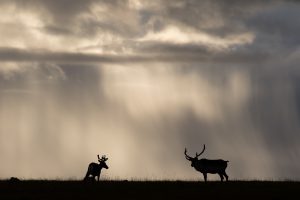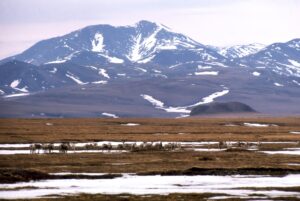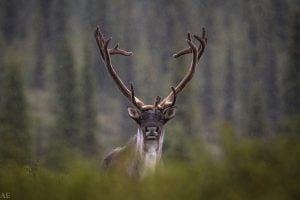Little more than three months from now, in March 2017, a hunting ban implemented in 2013 to prevent Labrador’s George River caribou herd from dwindling to the point of collapse is scheduled to end.
But a recent count of the herd reveals that the herd is in a more precarious position than it was nearly four years ago, raising the prospect that the ban could continue — a move which in turn could create friction between the government of Newfoundland and Labrador and members of Labrador’s Innu Nation.
A census conducted in July revealed that the herd numbered 8,938, down from the 14,200 animals counted during the 2014 census, prompting the government of Newfoundland and Labrador to warn that “At the current rate of decline and without immediate cessation of illegal hunting, biologists predict this herd could become functionally extirpated in less than five years, meaning that the herd will become so small it will essentially lose its capacity to recover.”
The herd has decreased by 99 per cent since the early 1990s, when its population was estimated at close to 800,000. Its precipitous decline has been attributed to deteriorating habitat, poor food resources, predation and the effects of climate change. As the herd declined, hunting became unsustainable, prompting the province to implement the ban in 2013.
“This is tragic, not only for the ecosystem, but for the Aboriginal people of Labrador and Quebec who have utilized this herd as a resource,” said Perry Trimper, Newfoundland and Labrador’s minister of environment and climate change, of the 2016 census results. “Our government is now assessing next steps to ensure the herd will be protected, and we once again call on individuals who value the herd to adhere to the current hunting ban.”
The ban has been contentious among the members of the province’s Innu Nation. The CBC reported that in 2015 Labrador’s Innu Nation said its members would continue to hunt George River caribou despite the warnings about rapidly declining numbers, adding that hunting wasn’t to blame and that Innu elders had long preached conservation.
In 2013, the Innu Nation said it was in favour of conservation measures when the ban was introduced, but argued that a ban was too extreme a measure, given the group’s long history of hunting the animal, said the CBC. At the time, the Innu nation told the CBC that the 650 Innu living in Natuashish and the 1,600 Innu living farther south in Sheshatshiu were typically killing and eating about 800 to 900 caribou annually.





